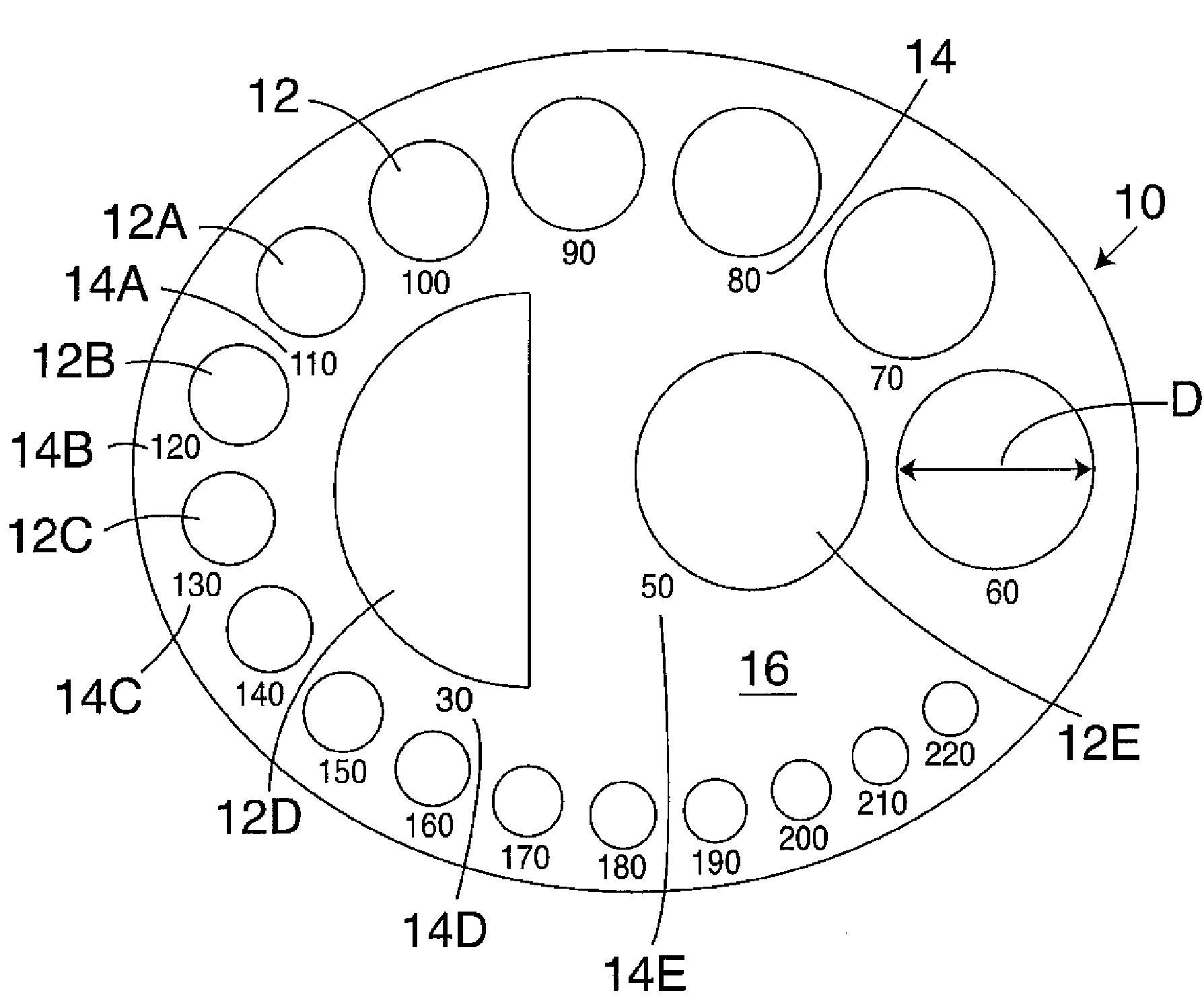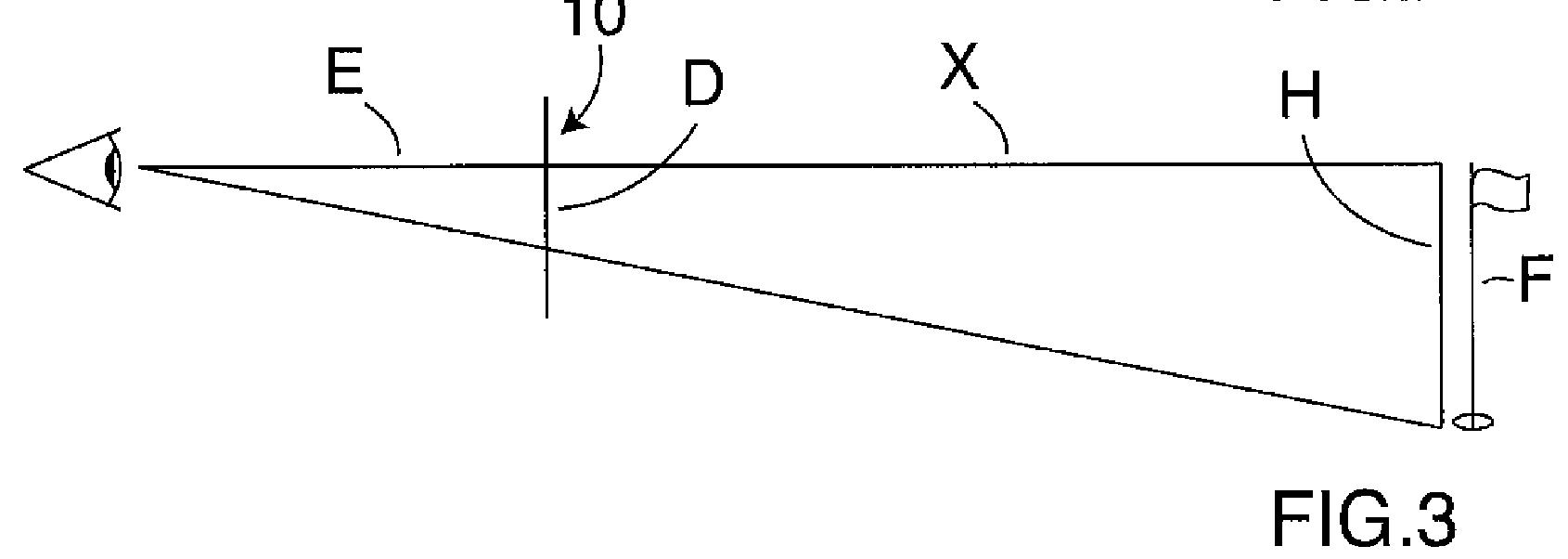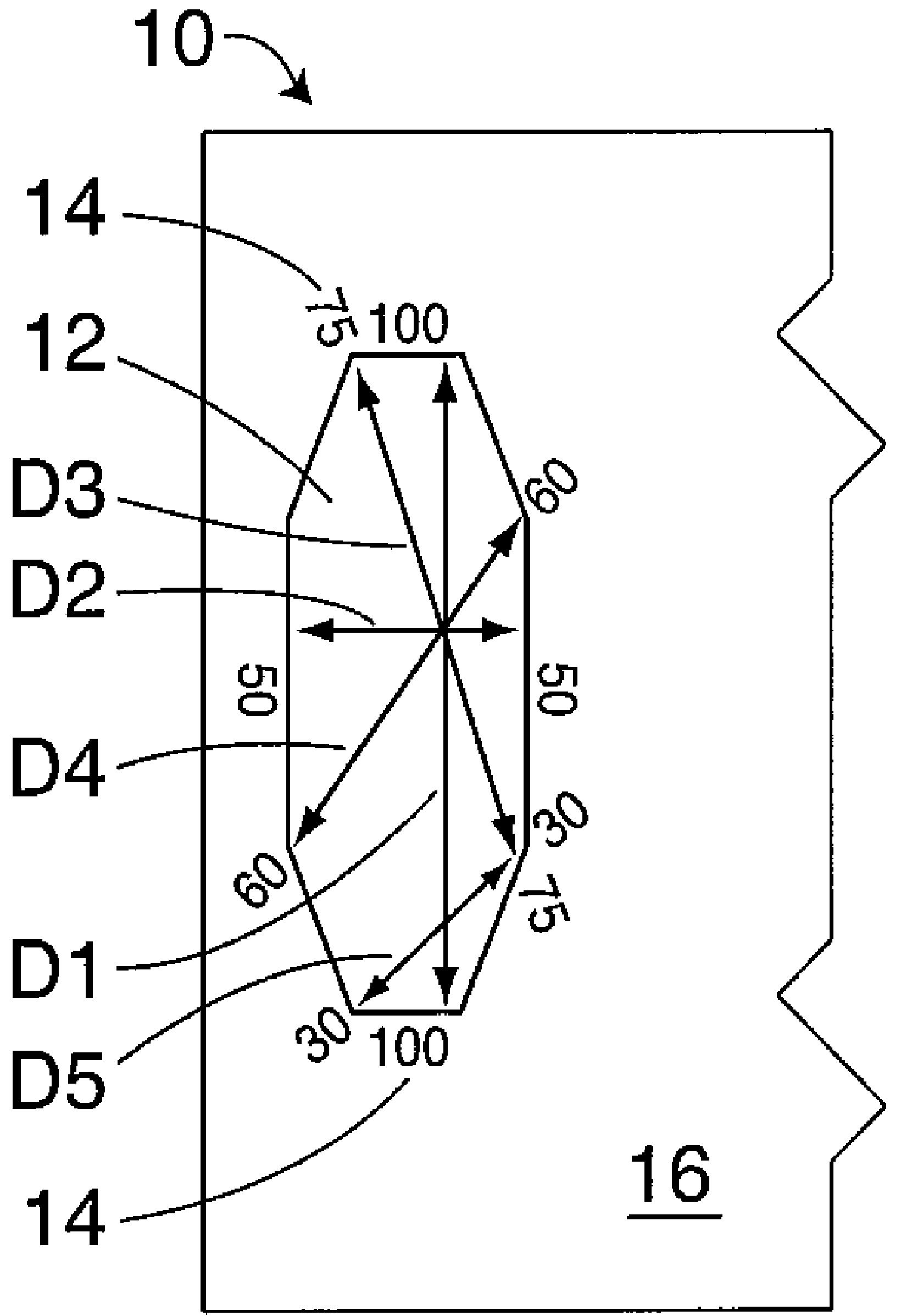Toss Out Your GPS, Forget About Laser Range Finders, Is This the Next Big Thing in Range Finders?
Technically challenged? If so, a recently published patent application describes a range finder that may be perfect for you. The patent application (US Pub. No. 20090151177) describes the invention as:
Range finder for determining the distance between the user and an object of known height or width, such as a golf flagstick, structure, etc. The range finder is a flat card, having a series of graduated apertures, each aperture being dimensioned to correspond to a particular distance to the flagstick. Range information is provided for each aperture. The user holds the card 24 inches from the eye and sights the flagstick through the apertures. The range information for the aperture whose diameter most closely corresponds to the height of the sighted flagstick is the actual distance between the user and the flagstick. The apertures are graduated in size, to represent range information in specific increments. The size of the increments is selected to facilitate optimal performance and may vary within a series of apertures.




The application goes on to explain:
[0004] A golfer uses the same basic swing, typically, for hitting a golf ball any distance, other than putting. Many golfers use 3/4, 1/2, 1/4 swings at ranges that are under 75 yards for pitch or chip shots. The golf club size exerts a major influence on how far the golf ball will travel. It is crucial, therefore, that the golfer know the distance to the flagstick or pin, so that he or she may choose the proper combination of club and swing.
[0005] Golf range finders are known and are often used by golfers, to determine the distance to the flagstick, also referred to as a pin, that marks the particular golf hole. Some more recently developed golf range finders are digital optical devices with magnifying lenses. The user looks through the device, aligns the digital range marks with the flag pin, and the device indicates the distance to the flagstick. These devices have certain disadvantages. They are bulky and add weight to the already heavy golf equipment; they often require batteries, which run down and need replacing; and they can be quite expensive.
[0006] More typically, golf range finders have been provided in the past as look-through cards or plates, with some system of a linear scale or graduated line markings along an aperture, that allows the user to judge the distance of the flagstick or the cup. U.S. Pat. No. 3,409,987 is illustrative of this type of golf range finder. The card has an aperture formed by a base line at the bottom and a distance line at the top that curves upward at one end. Holding the card approximately 24 inches from the eye, the user sights the flagstick and moves the card until the upper and lower ends of the flagstick just fit inside the aperture. The base line has a scale on it, indicating a plurality of positions that represent 10 yard distances. Depending on where along the aperture the flagstick fits between the base line and the distance line, the user can see that the flagstick is 80, 90, 100, . . . 200 yards away and is then able to select the appropriate club.
[0007] These cards have a disadvantage in that they have a single aperture with a graduated scale and it is often difficult for the user to determine or to interpolate the distance of the flagstick, or to remember exactly where the flagstick was, once he pulls the card closer, to look at the range information provided on the card.
[0008] What is needed, therefore, is a device that is inexpensive to manufacture, small and easy to carry, and that provides a clear, quick, and easy method of determining the distance of a flagstick.
[0009] The invention is a card comprising a series of apertures that are graduated in size. The sizes of the apertures are developed to indicate a range distance for a particular object, the object having a known or estimated height or width. Although the range finder may be developed for many different uses, such as determining the distance to a structure, telephone pole, etc., the invention will be described herein, by way of illustration only, as a range finder to be used by a golfer to determine the distance between the user and a flagstick. The apertures are sized to indicate the range of a flagstick that has a height of 78 inches. Distance or range information is provided on the card for each aperture. The user holds the card at eye level, approximately 24 inches from the eye. The user then sights the flagstick through the apertures and manipulates the card until finding the aperture with a diameter that corresponds closest to the sighted height of the flagstick. One simple method of identifying the particular aperture is to put one’s thumb over it. The user then brings the card to a more natural reading position to read the range information for the particular aperture, without losing track of just exactly where the flagstick was properly sighted and measured.
[0010] Any number of apertures may be provided on the card, depending on its intended use. A typical series of apertures, for example, would encompass a range between 50 and 200 yards, typically in 10 yard increments, although the size of the increments may vary within a series. The range information associated with each aperture is ideally printed next to the aperture.
I think this is the one range finder that has the potential to actually slow down play!
Dave Dawsey – Tracking Golf Range Finder Inventions
PS – click HERE to check out other golf club intellectual property posts
